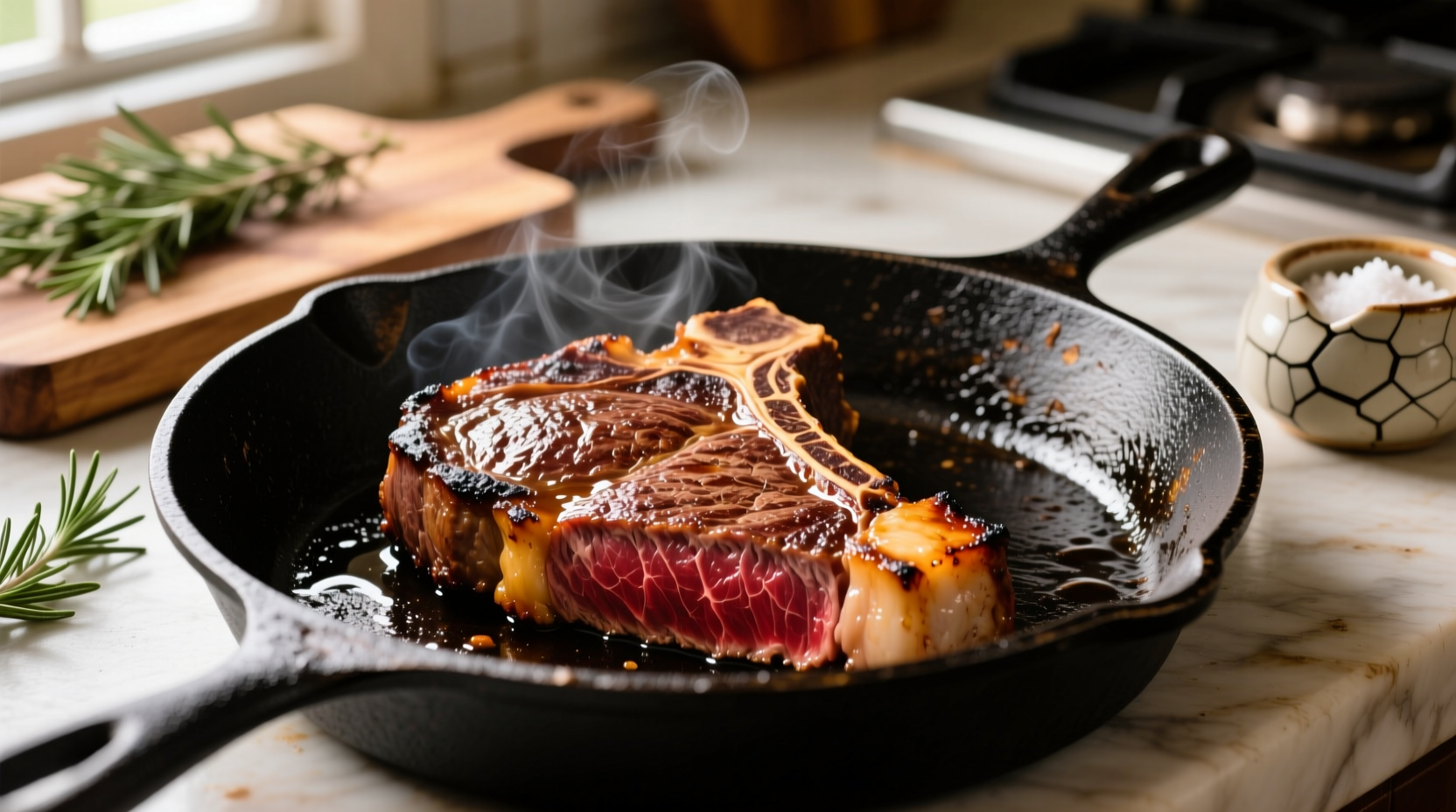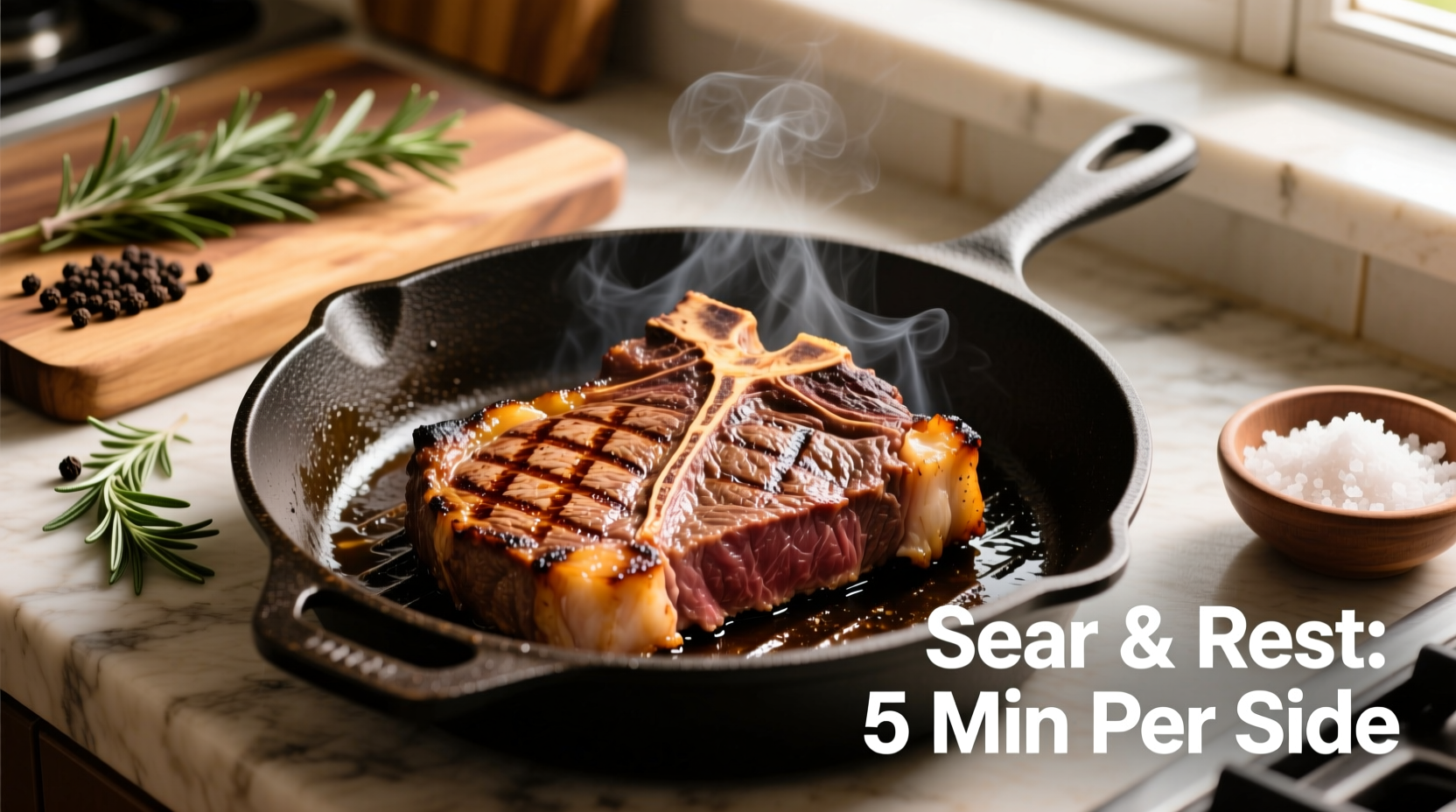Master Steak Cooking Without Outdoor Equipment
Many home cooks believe you need a grill for restaurant-quality steak, but professional results are achievable in any kitchen. This guide reveals the precise techniques top chefs use to create perfectly cooked steak using standard kitchen equipment, with no grill required. Whether you're in an apartment without outdoor space or facing rainy weather, these methods deliver exceptional flavor and texture.
Why Skip the Grill? Practical Advantages
Cooking steak indoors offers surprising benefits beyond convenience. Controlled indoor environments prevent temperature fluctuations that affect outdoor cooking. You gain precise heat management for consistent searing, and can better monitor internal temperatures without wind interference. Most importantly, indoor cooking allows year-round steak preparation regardless of weather conditions or living arrangements.
Essential Equipment Checklist
Your equipment choices significantly impact results. For optimal indoor steak cooking:
- Cast iron skillet - Superior heat retention for perfect searing
- Instant-read thermometer - Critical for accurate doneness (USDA recommends minimum 145°F for safety)
- Heavy oven-safe pan - For combination cooking methods
- Metal spatula - Better control than tongs for flipping
| Cooking Method | Best For | Required Equipment |
|---|---|---|
| Stovetop Searing | 1-1.5 inch thick cuts | Cast iron skillet, thermometer |
| Oven Finish Method | Thicker cuts (1.5+ inches) | Oven-safe pan, thermometer |
| Broiler Technique | Thin cuts, quick cooking | Broiler-safe pan, thermometer |
Step-by-Step Perfect Steak Method
Preparation Essentials
Remove steak from refrigerator 45-60 minutes before cooking. This critical step ensures even cooking - cold centers remain undercooked while edges overcook. Pat meat completely dry with paper towels; moisture prevents proper searing. Season generously with coarse salt and freshly ground pepper 30 minutes before cooking to allow seasoning penetration.
The Professional Searing Technique
Preheat your cast iron skillet over medium-high heat for 5 minutes until smoking slightly. Add high smoke-point oil (avocado or grapeseed oil work best) and heat until shimmering. Place steak in pan, pressing gently for full contact. Do not move for 2-3 minutes to develop crust. Flip once using metal spatula, adding butter, garlic, and herbs to the pan during the second side for flavor infusion.

Temperature Control for Perfect Doneness
Internal temperature determines doneness more reliably than timing. Insert thermometer horizontally into the thickest part:
- Rare: 120-125°F (remove at 115°F)
- Medium-rare: 130-135°F (remove at 125°F)
- Medium: 140-145°F (remove at 135°F)
For thicker cuts, finish in a 400°F oven after searing. This method prevents overcooked exteriors while reaching proper internal temperature. The USDA Food Safety and Inspection Service confirms that proper resting time after cooking allows temperature to rise 5-10 degrees while redistributing juices.
The Critical Resting Phase
Resting isn't optional - it's essential science. When steak hits high heat, juices migrate toward the center. Cutting immediately releases these juices onto your plate rather than in your mouth. Rest for 5-10 minutes (longer for thicker cuts), loosely tented with foil. This allows muscle fibers to reabsorb juices, resulting in significantly more flavorful, moist steak.
Avoiding Common Indoor Steak Mistakes
Many home cooks make these critical errors when cooking steak indoors:
- Overcrowding the pan - Lowers temperature and creates steam instead of sear
- Using olive oil - Extra virgin olive oil smokes at high temperatures needed for searing
- Peeking too often - Prevents proper crust formation
- Cutting too soon - Releases precious juices before redistribution
Adapting for Different Cuts
Not all steaks cook the same. Ribeye's fat content requires slightly lower heat to prevent flare-ups. Filet mignon's leanness benefits from butter basting during cooking. For flank or skirt steak, slice against the grain at a 45-degree angle after cooking. The American Meat Science Association confirms that proper slicing technique significantly impacts perceived tenderness regardless of cooking method.
Troubleshooting Guide
Problem: Steak sticks to the pan
Solution: Ensure pan is properly preheated and steak is completely dry before cooking. Wait for natural release before flipping.
Problem: Uneven cooking
Solution: Use the 'touch test' alongside thermometer - compare firmness to different parts of your hand for doneness estimation.
Problem: Excessive smoke
Solution: Turn on exhaust fan, open windows, and consider lowering heat slightly while maintaining sear temperature.
Perfect Pairings for Indoor-Cooked Steak
Indoor cooking allows for simultaneous side preparation. While steak rests, create a quick pan sauce using the flavorful fond left in your skillet. Deglaze with red wine or beef broth, adding shallots and herbs. Serve with roasted vegetables prepared in the same oven used for finishing steak. This efficient workflow mimics professional kitchen timing, maximizing flavor while minimizing cleanup.
What's the best steak cut for indoor cooking without a grill?
Ribeye and strip steaks (1-1.5 inches thick) work best for indoor cooking. Their fat content creates flavorful crusts during searing. Avoid very thick cuts (over 2 inches) unless using the oven finish method, as they'll develop burnt exteriors before reaching proper internal temperature.
How do I get a good sear without a grill?
Achieve professional sear by using a preheated cast iron skillet, ensuring steak is completely dry before cooking, and maintaining proper oil temperature (shimmering but not smoking excessively). Don't move the steak for the first 2-3 minutes to allow crust development. High smoke-point oils like avocado or grapeseed oil work best for this high-heat application.
Can I cook frozen steak without a grill?
While possible, cooking frozen steak produces inferior results. Thaw steak in refrigerator for 24 hours before cooking for best texture and even cooking. If急需, use cold water thawing method (sealed bag in cold water for 30-60 minutes), but never cook from completely frozen if seeking restaurant-quality results.
How long should I rest steak after indoor cooking?
Rest for 5-10 minutes depending on thickness. Thinner cuts (under 1 inch) need 5 minutes, while thicker cuts (1.5+ inches) benefit from 8-10 minutes. Resting allows juices to redistribute throughout the meat, resulting in significantly more flavorful, moist steak when cut.











 浙公网安备
33010002000092号
浙公网安备
33010002000092号 浙B2-20120091-4
浙B2-20120091-4